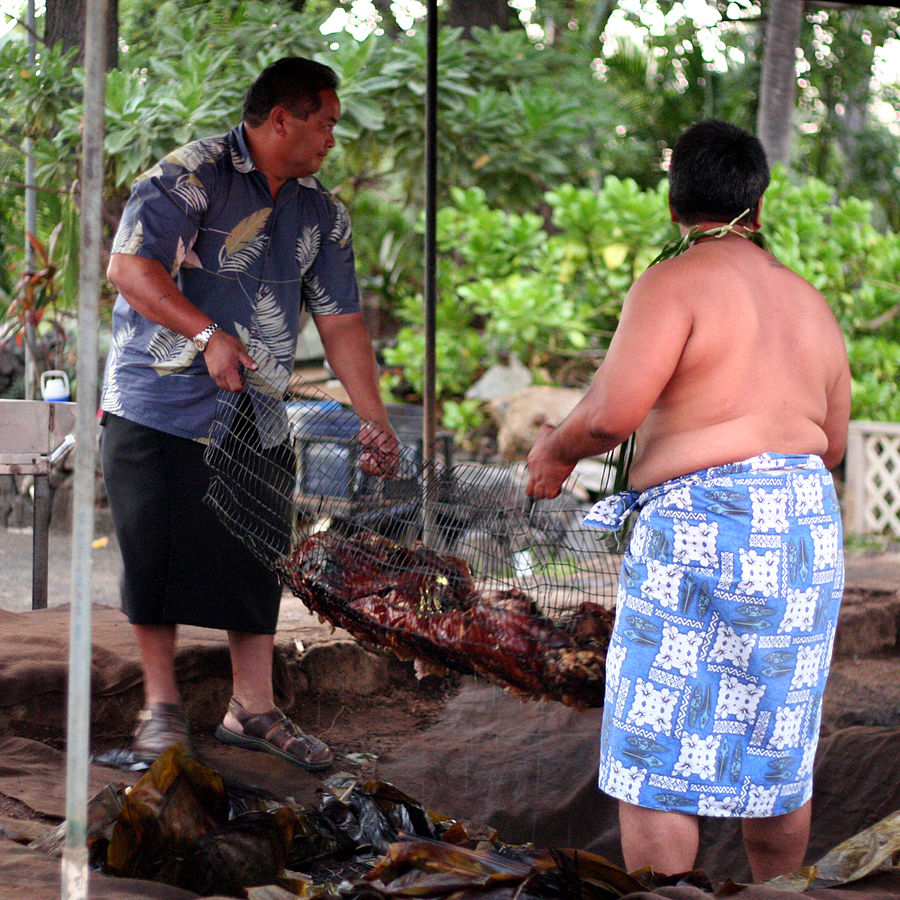Facts About Kalua
Kālua is a traditional Hawaiian cooking technique that utilizes an underground oven known as an imu. This method is renowned for preparing dishes such as kālua pig or kālua turkey, both of which are prominent fare at lūʻaus. Intriguingly, the term "lūʻau" actually refers to the taro leaf, which, when steamed, resembles and tastes somewhat like cooked spinach. Historically, lūʻau meals were enjoyed while seated on the floor over mats made from lauhala leaves.
The kālua cooking process begins with a hardwood fire kindled in a pit. Once the fire is blazing, stones are added to absorb and retain heat. The food, often wrapped in banana leaves and ti leaves, is then placed atop these heated stones. The entire setup is covered with layers of vegetation and soil to trap moisture and heat. After several hours, the slow cooking renders the meat tender and ready to be shredded. In contemporary times, some people use wet burlap or non-galvanized steel mesh as modern substitutes for traditional vegetation.
Kālua pig is a crowd favorite at lūʻau celebrations. While the traditional method involves an imu, some modern cooks resort to gas or electric ovens and incorporate liquid smoke to approximate the smoky flavor. There are even businesses that employ alternative methods, such as above-ground ovens called imu pao. Renowned Hawaiian chef Sam Choy has his own variation, preparing pork shoulder butt in an oven with liquid mesquite smoke, which he dubs "kālua pork." The distinctive taste of kālua pig is largely attributed to the smoke and the ti leaves used during the cooking process.

 Peru
Peru